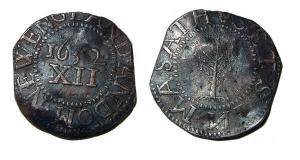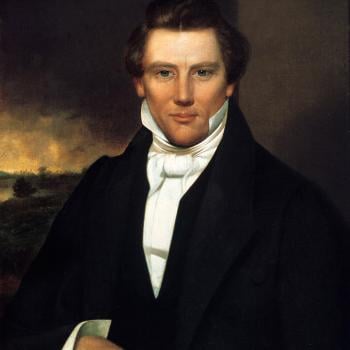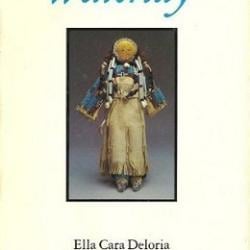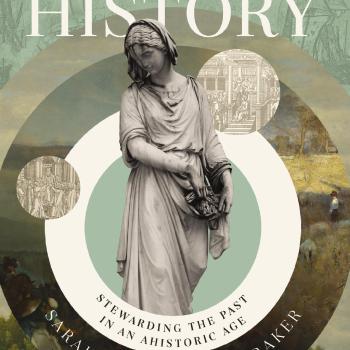I am used to thinking of the New England colonies as commonwealths, as what Michael Winship (in Hot Protestants) calls “quasi-republics.” Mark Peterson, in his remarkable City-State of Boston, uses this language as well. The Massachusetts Bay founders “erected a commonwealth remarkable for its autonomy,” he writes, “including an independent religious order free from the Church of England’s scrutiny, and a self-governing republic centered in Boston.” Peterson’s lens is different, though. He traces “the long-term fate of the efforts that Bostoners made to transplant a viable and venerable form a European polity to American shores”: that of the “consolidating city-state.”
French troops called English colonial soldiers as “les Bostonnais.” English commissioners themselves referred to New Englanders as “the Bostoners.” Spanish officials recorded ships as English, Dutch, Danish, or Bostonesa. In other words, Boston was a “dominant city” with a hinterland, an expansive city-state constantly in search of new lands and new markets. Peterson’s narrative begins with Boston’s seventeenth-century rise and ability to stave off political threats to its independence. He ends with Boston’s capitulation to the laws and mobs that forced “free states” to participate in the apprehension and return of escaped slaves.
Peterson begins with Boston’s audacity. The Massachusetts Bay Company took its charter to New England and held its meetings there. Bay Colony leaders proceeded to do a host of things not authorized by their charter. They incorporated towns, established a bicameral legislature, formed a confederation (the United Colonies of New England), and aggressively sought control over lands that lay beyond the bounds of their charter. These actions “usurp[ed] the king’s exclusive power to create corporations.”
Despite his prior publications on the religious culture of seventeenth-century New England, during the early part of his story Peterson keeps his focus squarely on political economy. It’s a tale of two currencies: wampum and silver coins. Peterson tells this tale with considerable aplomb. Many historians discuss the emergence of wampum as a regional currency central to the New England fur trade. Peterson, though, explains why wampum eventually failed as a currency. First, unlike the cowrie shells that functioned as a currency off the African coast, wampum wasn’t money prior to the 1620s. When Europeans assumed that it was money, their assumption and commercial interests led to the “overproduction of wampum, and overhunting of furs.” Wampum’s value collapsed, and Massachusetts Bay in 1661 decreed that individuals no longer had to accept it as a form of payment.

Less well known is the story of Boston’s own silver currency, which forms my favorite chapter in The City-State. The key figure here is the merchant and silversmith John Hull, the long-term treasurer and mintmaster of the Massachusetts Bay Colony. (You can check ebay to see some examples of Hull’s work). The decision to coin money was among the Boston magistrates’ most brazen steps. “Besides the royally supervised [Spanish] mints at Patosi [in Peru] and Zacatecas in Mexico,” explains Peterson, “Hull’s mint in Boston was the only other place in the Western Hemisphere where high-grade silver coins were being produced to European monetary standards.”
Why did the Bostonians take this step? They needed “small change,” particularly needed in New England. Big coins sufficed for major international transactions, and “fiduciary money” sufficed for local everyday transactions. But Boston’s merchants needed to buy salted fish, barrel staves, and other items from small producers across the region, then sell those products in Europe and the Caribbean. “The big merchants of Boston,” explains Peterson, “needed steady, reliable access to modest goods not usually thought of as commodities in the early modern world.” Wampum could not serve this function, especially after its value collapsed. Spanish pesos, or pieces of eight, might have worked, but those coins were vulnerable to clipping and other forms of fraud that made their value suspect.
So Boston coined its own money. And it did so in ways that ensured that at least most of its owns would remain in New England. The goal was to “keep the coinage circulating, but only within the region.” The magistrates ordered Hull to produce coins of the same quality as English sterling, but only three-quarters the weight of their English counterparts. In other words, a New England shilling only contained nine pennies worth of silver. Because New Englanders knew their value, the coins were accepted across the region, but foreign did not especially want them. Where did the Bostoners get the silver in the first place? From Spanish coins. How many coins did Hull make? About 300,000, a large amount of small change.
Peterson traces Boston’s entanglement with slavery from its earliest years, when its merchants started doing business with the Caribbean, when its soldiers seized Pequot captives, and when a few households acquired African slaves. The endpoint of the book is not surprising when one considers that Boston officials branded runaway Pequots in the late 1630s and captured runaway African slaves in the early 1680s. In terms of the city’s independence, the U.S. Constitution and the political conflicts of the early 1800s had in many respects already settled that question.
New Englanders, and Bostoners in particular, prefer to draw contrasts between themselves and the slaveholders to their south. They walk the Freedom Trail and go to the Robert Gould Shaw monument and think about white and black New Englanders joining together to free southern slaves. They forget that New Englanders enslaved and exported many hundreds of Native Americans in the seventeenth century, and that African Americans slaves became rather ubiquitous in turn-of-the-eighteenth-century Boston. Enslaved African Americans comprised eight-to-ten percent of Boston’s population in the mid-eighteenth century. A hundred years later, Peterson comments, Boston’s free blacks lived in the “most racially segregated major city in the United States.”
One of the many virtues of this book is Peterson’s use of evocative, biblical, moral language. In particular, he strikes this tone in short prefaces to the three main sections of his book (“Render unto Caesar,” “The Selling of Joseph,” and “A New King over Egypt.”) One example: “the New English Israelites were fruitful and increased abundantly, and multiplied, and waxed exceeding mighty.” Brilliant. New kings arose, Peterson writes, that did not know the old ways of Boston. King Cotton, in particular.
In a coda, Peterson suggests that his book will have “served its purpose if it encourages readers to calculate the value of a common form of polity that national consolidation brushed aside.” I like federalism very much, but I’m not so sure that I see Boston’s history as a particularly compelling argument for it. Peterson’s book serves many other purposes well, however, from its fresh and original interpretation of colonial New England to its engagement with what are, in the end, fundamentally moral questions. The City-State of Boston is an engaging blend of small change and big ideas.













